Losing the subject, finding the picture (Part 2 of 3)
April 15, 2023 by Bruce W.
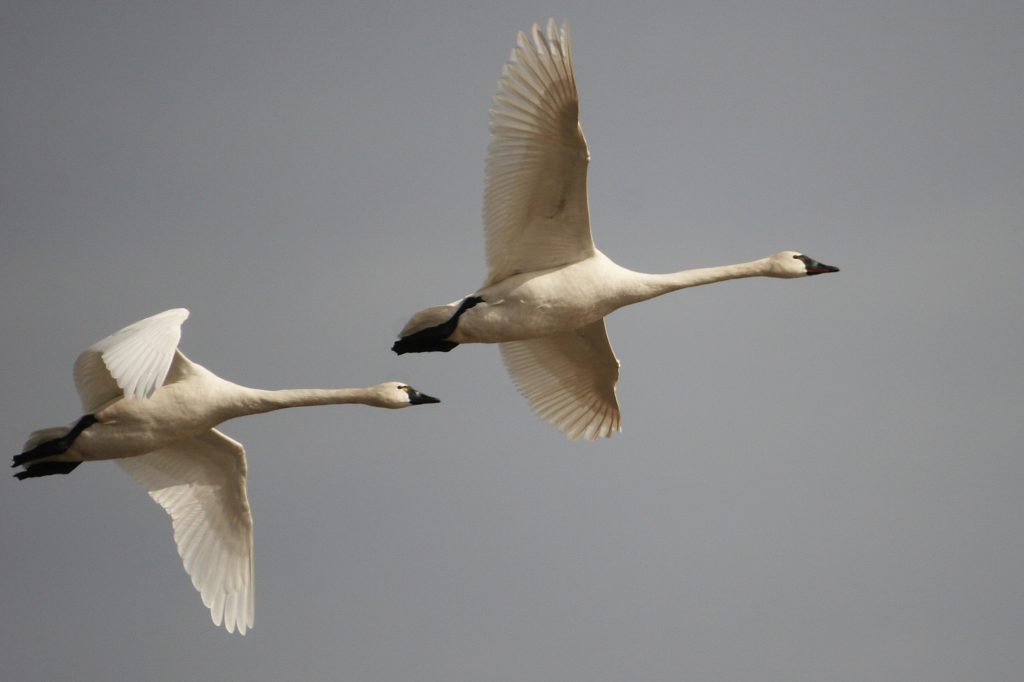

Embracing chance events and happy accidents in your photography
In Part 1,(which you can find here) we looked at my accidental discovery of a new way of
playing with my photographic imagery, back in the analog era. Once I started playing with
electrons, instead if film, play opened up…
One of my earliest forays into digital photography was shooting migrating Tundra Swans in
Aylmer, Ontario. I was reveling in the ability to just keep on shooting, not having to stop to
reload film, or worry about the expense of developing it. Having already taken scores of shots
that froze the birds’ flight with fast shutter speeds, I gave myself permission to try some panning
shots with longer exposures to see what would happen, letting their movement over time play out
across the sensor with who knows what result. I remembered the tiger. I remembered the turtle.
No longer willing to simply wait for “happy accidents,” I went looking for trouble.
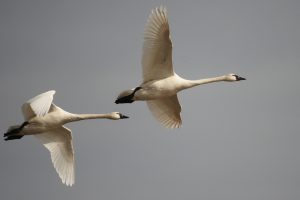
Documentary swans. 500mm, f8, 1/2000 sec., 400 ISO
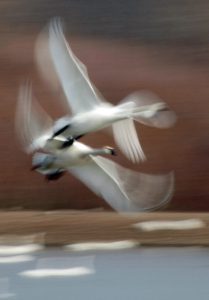
Lyrical swans. 500mm, f8, 1/10 sec., 100 ISO
Here are both ways of seeing the same subject presented side by side. One is more conventional
and straightforward, the other more impressionistic and lyrical. Both are photos of Tundra Swans
in flight. Each captures the Tundra Swans in a different way. Both work. But they are not
equivalent; they are not interchangeable. Which approach is “better?” It depends. What are the
pictures being used for? They are different in feeling and mood. There are purposes or venues
where one would be more suitable than the other. A Tundra Swan image used in a scientific
paper or textbook will likely have to fulfill different requirements than one used to illustrate a
book of poetry. I used each way of seeing to meet my own needs. First, I wanted to take crisp,
clear shots of the swans, just to know I could actually do it with my relatively new equipment:
“How do I shoot X?” Then, I decided to play, to see “What happens if I try Y?”
Shooting in this way is not without risks. The results can be strange and unpredictable, and not to
everyone’s taste, but they don’t have to be. Not all experiments succeed. Each image stands or
falls on whether it works as a whole. Things don’t always turn out, though that is a chance we
take every time we press the shutter release. Overuse of a technique can become stale, boring and repetitive. “Style” for its own sake, that fails to serve the interests of the image, is
counterproductive.
Fortunately, happy accidents occur all the time. Without planning it, you can end up with better
pictures than what you had intended. The plan for the shoot that resulted in the image below was
to get a shot of a gull in flight against a sunny blue sky. I was following this bird, shooting
continuously as it flew past. I kept shooting as it passed in front of a building in the distance. I
hadn’t wanted buildings in the shot, but a slow finger on continuous shooting took one photo too
many. No big deal; electrons are cheaper than film. The gull was now in front of a concrete sky.
Like the tiger, this was not what I’d wanted, but the striking contrast between organic and
constructed, rounded and rectilinear, alive and inert was immediately striking and obvious.
Random accident 1, plan 0.
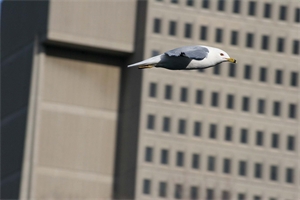
One shot too many on continuous shooting…
However realistic, naturalistic, or documentary the image, all photography is an abstraction. We
remove information, context, and three dimensionality from our subjects by the very act of
photographing them. If we see this as a challenge rather than an obstacle, we can take this idea
and run with it. We can try to capture and evoke a subject using smaller details rather than using
the whole. How much can we take away or leave out and still have an image that has a story to
tell? Think of it as photographic haiku.
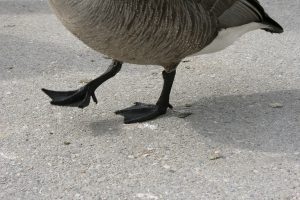
Places to go, things to do.
In Part3, we conclude this tale of my broadening horizons, with more ways of seeing, and
shooting, that you might want to try yourself.